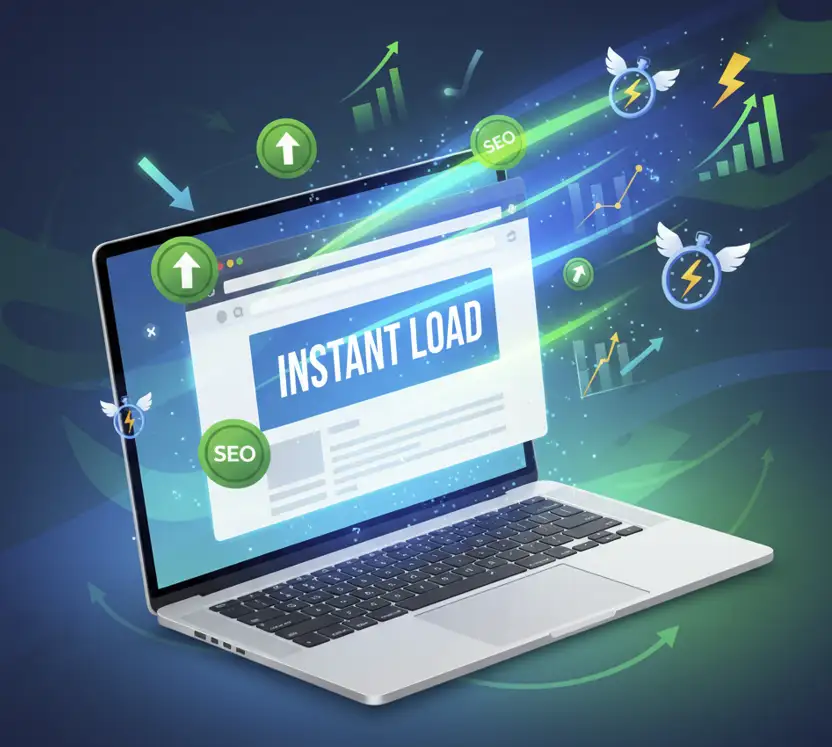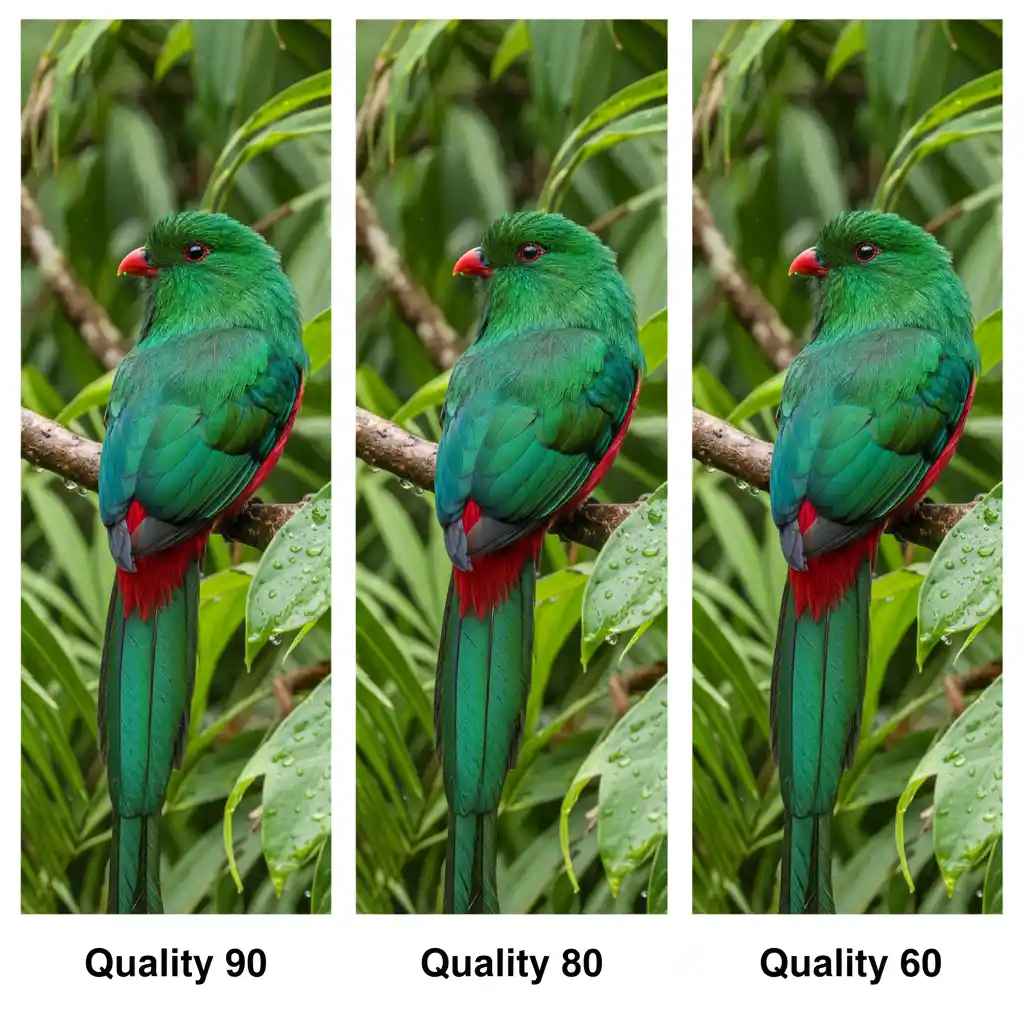Tired of your website moving at a snail’s pace? You’re in the right place. Let’s talk about the one change that can slash your load times and skyrocket your SEO.

What is WebP and Why Should You Even Care?
Let’s cut to the chase. WebP is a cutting-edge image format cooked up by Google for one simple reason: to make the web blazing fast. It uses advanced prediction technology to create files that are significantly smaller than their JPEG and PNG counterparts. Think of it as putting your bulky images on a serious diet—they shed weight (file size) without losing their visual muscle (quality).
Why does this matter? Because in the digital world, speed is king. A faster website means:
- Happier Visitors: No one likes waiting. Quick load times mean your audience sticks around.
- Better SEO Rankings: Google rewards speed. A zippy site is more likely to climb the search rankings.
- Lower Bandwidth Costs: You’ll save on hosting resources, and your mobile visitors will thank you.
Unlike JPEG, which only supports lossy compression, WebP supports both lossy and lossless compression, as well as alpha transparency (like PNGs) and even animation (like GIFs). This versatility makes it a true all-in-one solution for virtually any image on your website.
Using WebP is like giving your website a free performance upgrade. You get all the visual punch without the performance penalty.
Finding the “Sweet Spot”: The Truth About WebP Compression
So, what’s the magic number for the best WebP compression? The surprising answer is: there isn’t one. Instead, there’s a “sweet spot”—a perfect range that balances tiny file sizes with stunning visual quality.
WebP quality is measured from 1 (maximum compression, lowest quality) to 100 (zero compression, highest quality). But here’s the secret: you almost never need 100. Your eyes won’t notice the tiny details you lose, but your site’s speed will feel the massive difference.
For most images, the ultimate sweet spot for WebP quality is between 75 and 90.
- ⭐ 85-90: The “Hero” Range. Perfect for your most important visuals—homepage banners, portfolio shots, and main product images. You get a huge size reduction with zero noticeable quality drop.
- 👍 75-85: The “Workhorse” Range. The go-to for 90% of your images, like blog post graphics and icons. It’s the ultimate balance of size and quality.
- ⚠️ Below 75: The “Caution” Zone. You can dip lower for tiny thumbnails, but be warned! You might start seeing digital artifacts. Proceed with care.
What about graphics, logos, or screenshots where every single pixel matters? For these, WebP also offers a lossless compression mode. This works like a PNG, ensuring perfect, pixel-for-pixel quality but at a file size that’s often ~25% smaller. So, when quality is non-negotiable, lossless WebP is your best friend.

Paid Plugins vs. Free Online Tools: The Smart Way to Convert
Ready to make the switch? Your first instinct might be to grab a WordPress plugin. But hold on! While plugins promise automation, they often come with hidden costs—monthly fees, site bloat, and slower performance. Isn’t that what we’re trying to fix?
There’s a smarter, leaner, and 100% free alternative: a dedicated online converter.
Online WebP Converter
- Absolutely Free: No credit card required, ever.
- Zero Bloat: Keeps your site lean and fast.
- Total Control: You decide the perfect quality for each image.
- Incredibly Simple: Just drag, drop, and download.
The Catch? A tiny extra step—you convert images *before* you upload. A small price for huge savings and speed!
**Exclusive Tool:** To immediately implement the compression settings discussed in this guide (optimal quality 75-90), you can use our dedicated, zero-bloat, free WebP Image Compressor. Take control of your file sizes without relying on expensive, site-slowing plugins.
WordPress WebP Plugins
- Often Expensive: Many hide their best features behind a subscription.
- Can Slow Your Site: Every active plugin adds code that has to run, increasing your server’s workload and potentially slowing down your site’s backend and frontend.
- Conflict Risks: Can clash with themes or other plugins.
- Database Bloat & Security Risks: Many plugins store data in your database, which can bloat over time. Furthermore, outdated or poorly coded plugins can become a security risk.
- Less Control: Often uses a one-size-fits-all compression setting.
For savvy website owners, the choice is obvious. Take control of your optimization and keep your money in your pocket.
Ready to experience the speed for yourself? You can start converting your images to high-performance WebP in seconds. For a powerful and simple solution, we recommend using a Free Unlimited Webp Converter. It’s a great way to take control of your optimization without adding any bloat to your site.
The Final Word
In today’s fast-paced digital landscape, image optimization isn’t just a suggestion—it’s essential. Switching to WebP is one of the highest-impact moves you can make to speed up your site, delight your visitors, and get on Google’s good side.
So, ditch the expensive, clunky plugins that weigh your site down. Embrace the control and efficiency of a dedicated tool. By compressing your images in the 75-90 quality sweet spot before you upload, you’re not just optimizing images; you’re future-proofing your website’s performance. It’s the professional’s secret to a site that’s both beautiful and blazingly fast.
What are your thoughts on WebP? Have you found a compression sweet spot that works for you? Share your experience in the comments below!
